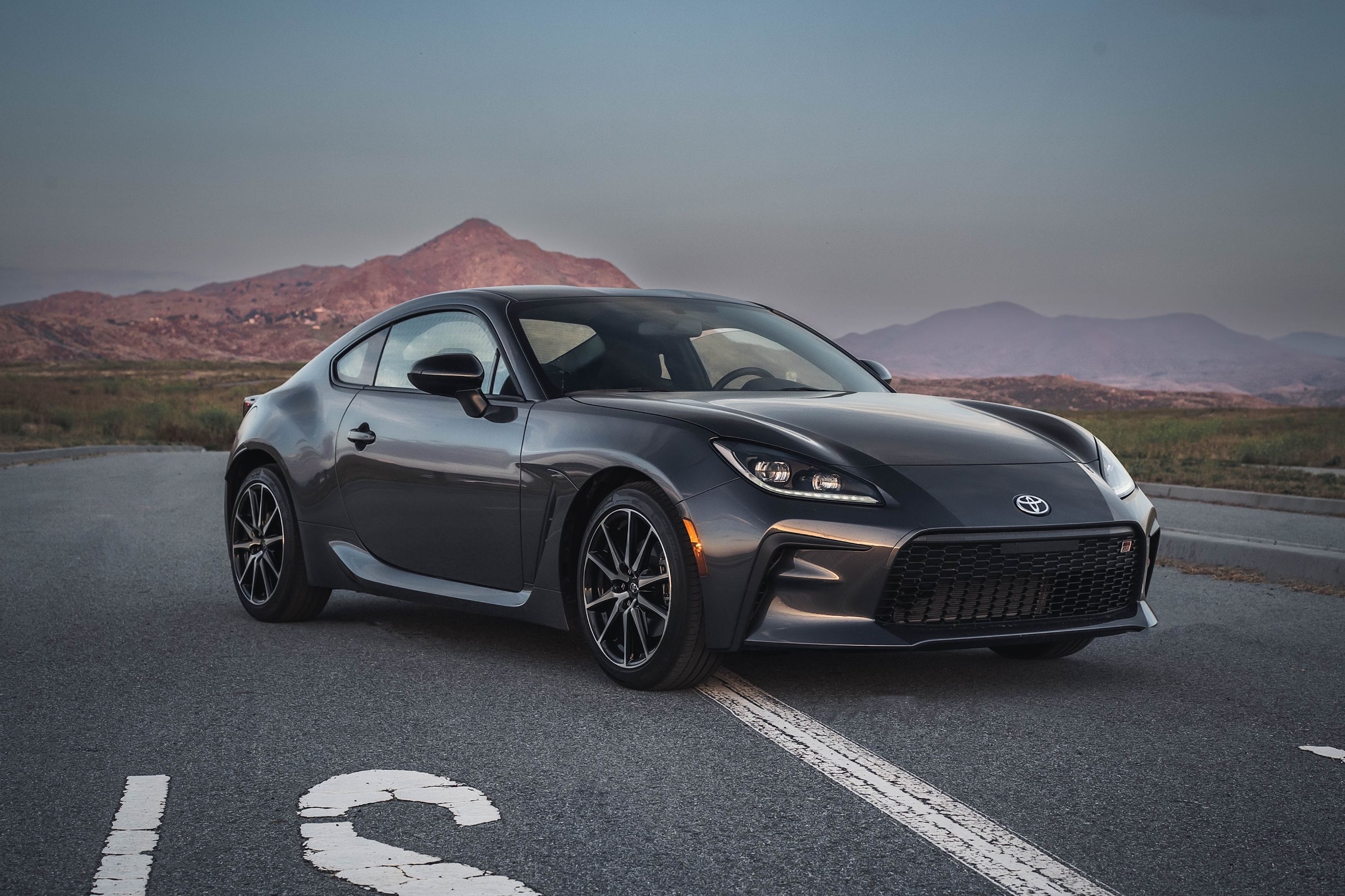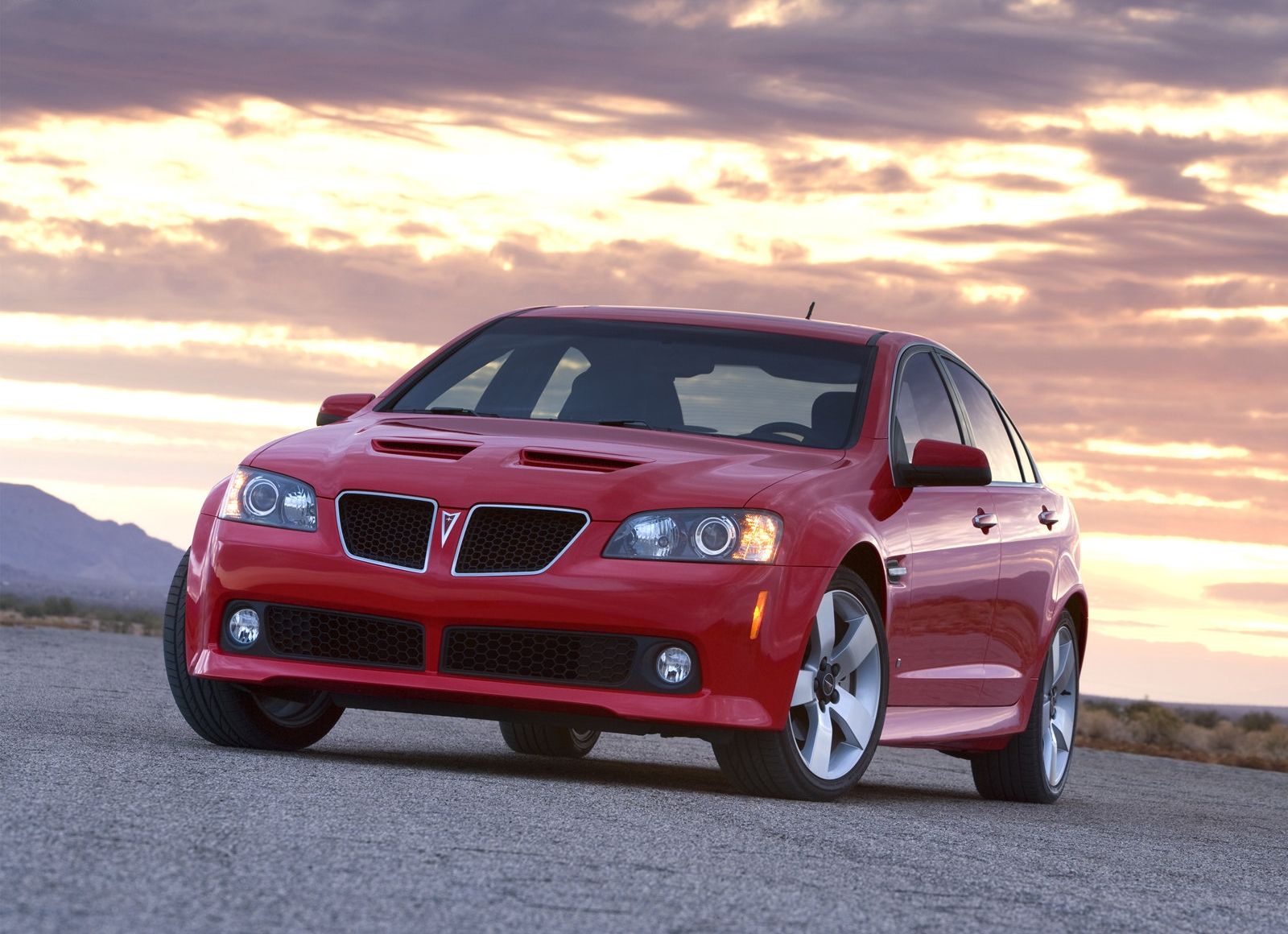In reality, few automakers are successful in the long term. For every Ford, there's a Kaiser Frazer, DeSoto, Tucker, DeLorean, and, of course, an Edsel. Edsel was a brand brought into being by Ford, and that appears to be one way brands survive - by buying or creating brands that they're willing to sacrifice when the main brand gets in trouble or the new brand starts to fail. That doesn't mean executives just shrug their shoulders when the balance sheet starts getting wonky. Those brands make money when they're successful, and, just as importantly, that success reflects well on the holding company. More independent companies don't have that luxury, take DeLorean, for example, and rarely get to release a new car as a Hail Mary. Either way, here are some of those cars that couldn't save an automotive brand.
1. 2008 Pontiac G8
There were a couple of cars that could have saved Pontiac from its death spiral that ended in the brand's final car rolling off the line in 2010. However, the automotive executive's cautionary tale of the Pontiac Aztek left such a mark on the brand that even the mighty G8 couldn't save it. A four-door V8-powered sedan with a Pontiac badge should be a recipe for success in the US. It was a rebadged Holden Commodore, which was a hugely capable and successful GM performance sedan in Australia and New Zealand. However, it was released in 2008 and sold just 13,000 units, leaving 11,000 unsold G8s in inventory. By mid-2009, that inventory had shrunk, and GM had sold 30,700 units, making it a sales disappointment. The last G8 model rolled off the line on June 19, 2009, and Pontiac was a dead brand walking.
2. 1978 Triumph TR8
The TR7's body style is something you either love or hate, but the car was fun to drive and surprisingly reliable for a British sports car at the end of the 1970s. British Leyland was in trouble because, well, it was British Leyland. Instead of focusing on making better cars and serving the European market properly, someone approved the Triumph TR7 as a car to push into the American market. Taking the idea a step further, Triumph also stuck a V8 under the hood and called it the TR8. With the reliable and adaptable Rover V8 under the hood, the TR8 was a great car and did surprisingly well in US sanctioned motorsport. Still, only 2,750 were sold. A big move into the US market might have saved Triumph from the axe, but, instead, the legendary automaker initially formed in 1885 sputtered out in 1984. The name still exists and is currently owned by BMW as part of its purchase of the Rover Group in 1994.
3. 2012 Scion FR-S
Automakers love to tell us their new or updated car is aimed at a younger demographic, which inevitably makes us roll our eyes. Young people in their late teens to mid-twenties aren't typically in a position to buy a new car. What automakers mean is they are aiming to sell their cars to people that want to feel youthful, but that doesn't sound as good. Toyota meant it, though, when the automaker created the Scion brand and launched it in 2003. Out of the gate, the boxy little xB model found success with retirees that liked its size, practicality, and ease of getting in and out of. The tC, a small coupe, did better with its target demographic, but by 2010 Scion had hit a sales low and was in trouble. In 2012, Scion started selling a rebadged version of the Toyota 86, but all it did was cannibalize sales of the tC. Scion could've survived if it did the job it set out to do, which was to provide an entry point into Toyota and Lexus. However, few Scion customers were following the path into its flagship brands, and the Scion brand was phased out as of 2016.
4. 1995 Oldsmobile Aurora
In the late 1990s, Oldsmobile needed an image boost and to compete with premium brands like BMW, Mercedes, and Lexus with a large sedan. By the time the Aurora got to market, Oldsmobile's sales were bottoming out. However, the automaker now had a stylish, technologically advanced, and well-built V8 sedan to sell. As part of the rejuvenation plan for Oldsmobile, the brand decided that it wouldn't put Oldsmobile badges on the car, and it would only appear in small letters on advertisements. That sounds counterintuitive because it is, and it was a baffling mistake to make. Sales started out well, but people were confused about where to look to buy one without a constant reminder as to who made the Aurora. The second generation crashed and burned, partly due to its release coinciding with GM announcing it would be winding down the Oldsmobile brand; something it might not have needed to do if Oldsmobile had marketed the Aurora with some pride for the name.
5. 1997 Plymouth Prowler
Plymouth was created by Chrysler and launched in 1928 as an entry-level brand, and managed to survive all kinds of problems until it went extinct in 2001. Plymouth waded through the 1990s without a sense of identity, and Chrysler had tried to get the brand back on course by repositioning it, again, as an entry-level brand. As a Hail Mary, Plymouth was given a new course that involved building and selling unique and distinctive models. The first of those models was the Plymouth Prowler. The bizarre retro hotrod roadster was never going to be a volume car but didn't work well as it was powered by V6 rather than a V8, which you would expect to find in a hot rod. Only 11,702 models were built and sold over five model years, and 3,170 were with a Chrysler badge in 2001 and 2002. The second model that was scheduled to help Plymouth make a comeback was the PT Cruiser, which ended up as a sales success for Chrysler.
6. 2005 Saab 9-7X
General Motors acquired Saab in 2000. To try and rescue the brand, it launched two badge-engineered cars onto the US market in 2005 with the hope of boosting sales. The Saab 9-2X was based on the Subaru Impreza, while the Saab 9-7X was based on the Chevrolet Trailblazer. Hope was mainly pinned on the mid-sized luxury SUV, but the 9-7X didn't sell well. At the peak of its five-year run, Saab sold 28,080 9-7X models, but in 2009, that number dwindled to 1,209 as GM shut down its plant in Moraine, Ohio. Part of the problem was likely that the 9-7X was the second most expensive luxury SUV made by General Motors, with the Cadillac Escalade being the first. The other part of the problem was that it was on the same platform as the Chevrolet TrailBlazer, GMC Envoy, Oldsmobile Bravada, and Buick Rainier and Saab was a niche brand in the US.
7. 2001 Holden Monaro
While The Australian GM-owned brand, Holden, managed to hang on by its fingernails and badge engineering until 2020, trouble started looming at the turn of the century. The early 2000s were critical, and the revival of the Monaro name as a performance coupe could have turned the tide. It was popular and also used as a base for Holden Special Vehicles (HSV) V8-powered high-performance vehicles. The profits just didn't come, though, and Holden ended up relying on vehicles from other brands with a Holden badge slapped on them. Through the 2010s, Holden was relying on government funding and wage freezes, but by 2017 it was defunct as an automaker.


